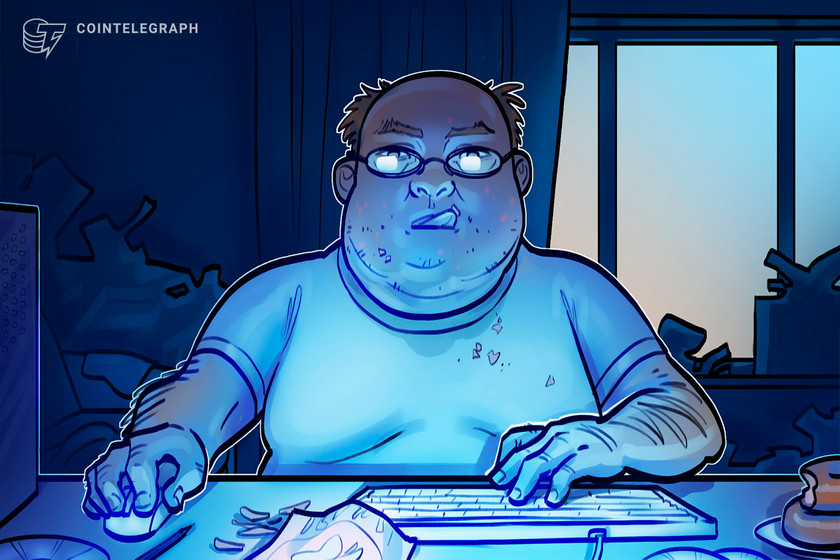[ad_1]

The GameFi trade is ready to unleash its huge potential throughout the subsequent six years. In line with Absolute Experiences information, its estimated worth will develop to $2.8 billion by 2028, with a compound annual progress charge of 20.4% in the identical interval.
It’s a quieter and maybe much less scandalous department in comparison with the extra newsworthy centralized finance (CeFi) and decentralized finance (DeFi) areas, however this hasn’t impacted its pressure nor its promise. Even within the depth of a bear market, crypto gaming has confirmed to be probably the most resilient in comparison with different market sectors.
Nevertheless, there’s a downside with the GameFi trade: The distinction in high quality between teaser trailers and delivered merchandise is usually stark sufficient to get underneath the pores and skin of the keen avid gamers who put their religion in them. As that turns into the case with an increasing number of titles, your entire trade suffers.
The extra that prospects’ expectations are unmet and dissatisfied, the additional mass adoption slips farther from our attain. Builders should work on what they’ll really construct, not overpromise and underdeliver. And, we simply don’t see that as typically as we must always.
This ache level is just not insignificant. Gaming doesn’t exist in a bubble, however reasonably it’s more and more a convergence level the place Web2 and Web3 meet and develop modern methods to combine one actuality with the opposite. The likes of Animoca Manufacturers went so far as saying that “the gaming trade is nearer to a metaverse than another” and “GameFi may change into an onboarding level for metaverse and introduce folks to digital possession.”
Associated: Japan is dropping its place because the world’s gaming capital due to crypto hostility
Effectively, since GameFi performs such an vital function within the introduction of Web3, is it an excessive amount of to ask that it begins defending its repute?
The play-to-earn nonfungible token (NFT) recreation trade continues to be a comparatively nascent one, with little doubt that the way forward for blockchain-based video games holds many thrilling AAA titles, however from at present’s standpoint, all we see is visually beautiful, overdone and inflated teasers that builders simply appear to not be capable to construct.
In principle, it shouldn’t be such an uphill battle. At Murasaki of BCG studio, builders have been engaged on greater than 30 cell recreation titles, however they at all times know roughly how lengthy and the way a lot it takes to construct each. It’s not rocket science: if one thing like Genshin Impression prices $200m to provide and took over two years to construct, how will you say you’re engaged on an AAA title with solely $4 million and even $50 million and it’s going to be prepared inside a couple of months? It’s simply unrealistic.
The usual improvement and launch schedule is identical for everybody: publish a white paper with a transparent blueprint of the work builders are getting down to do, launch a teaser trailer to ramp up the joy, increase funds by promoting NFTs and tokens for improvement and, lastly, begin creating. In some way, for 90% of GameFi initiatives, one thing occurs between the trailer launch and the event part that causes video games to look amateur-ish and disappointing.
I’m not the one one criticizing Pixelmon and its considerably miserable NFT drop — one consumer even tweeted, “Thanks @Pixelmon, worst mint of my life!! I’m quitting NFTs.” When evaluating the venture roadmap, which had promised “the most important and highest high quality recreation the NFT house has ever seen,” to the precise product Pixelmon launched, which appeared nothing just like the slick demo they’d created anticipation with just a few months prior, it’s straightforward to see why folks could be dissatisfied.
Consider it like this: it’s like promoting the possession of a constructing by exhibiting a 1/100 scale mock of the constructing however omitting how lengthy it’s going to take to construct and refusing to say how a lot cash you’re keen to spend alongside the best way. Then, whenever you lastly reveal what you’ve been engaged on, as a substitute of a skyscraper, it’s a shed.
Associated: GameFi builders might be going through large fines and onerous time
However, how lengthy can that proceed earlier than customers get too disillusioned with the house as an entire and find yourself quitting it earlier than it’s had an opportunity to achieve its full potential?
It might sound harsh, however the easy reality is that if you happen to can’t ship what you promised, it is best to let others do it. 99% of builders have been overpromising and under-delivering persistently — they’re making the remainder of us trustworthy and keen GameFi lovers look dangerous and risking our trade’s repute, and for what?
Such initiatives ought to get out of the house solely and provides GameFi an opportunity to redeem itself earlier than customers get bored with the charade. The stakes are too excessive to allow them to play with the way forward for GameFi any longer, or the dream of mass adoption will slip additional and farther from us and by no means flip into our actuality.
Shinnosuke “Shin” Murata is the founding father of blockchain video games developer Murasaki. He joined Japanese conglomerate Mitsui & Co.in 2014, doing automotive finance and buying and selling in Malaysia, Venezuela and Bolivia. He left Mitsui to affix a second-year startup referred to as Jiraffe as the corporate’s first gross sales consultant and later joined STVV, a Belgian soccer membership, as its chief working officer and assisted the membership with making a group token. He based Murasaki within the Netherlands in 2019.
This text is for common data functions and isn’t meant to be and shouldn’t be taken as authorized or funding recommendation. The views, ideas, and opinions expressed listed here are the writer’s alone and don’t essentially mirror or characterize the views and opinions of Cointelegraph.
[ad_2]
Source link


